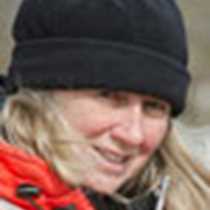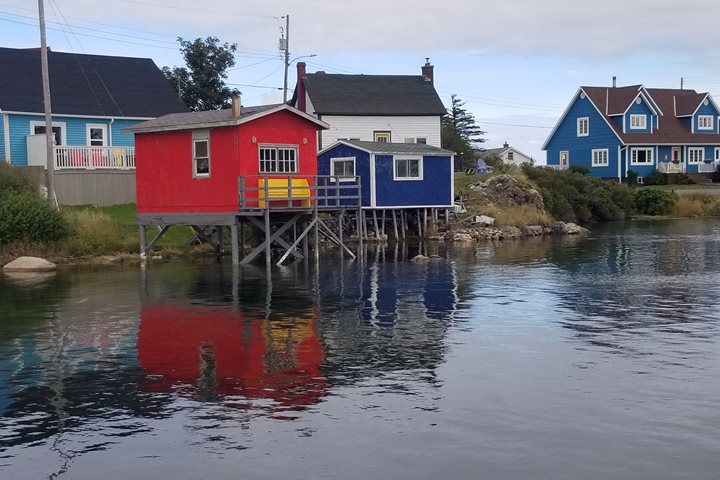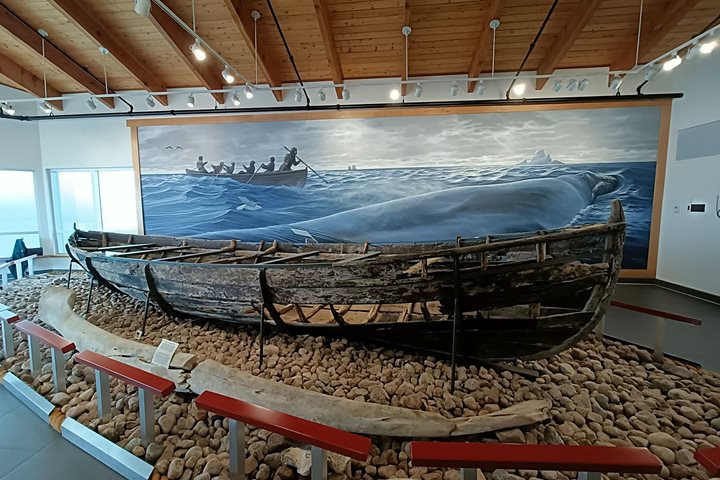We boarded school buses this morning in St. Anthony and were taken to the world famous archaeological site of L’Anse aux Meadows. Once there we headed straight into the visitor centre. There was no mistake. It was diagnostic, characteristic—a Norse ring-headed pin. I had found a number of similar ones while working on Viking Period excavations back in Dublin in Ireland. Now here I was, looking at this one fashioned in bronze, safely housed in a glass display case in the museum at this UNESCO World Heritage site.
The Norwegian writer and explorer, Helge Ingstad, had been fascinated by the famous Vinland Saga, a Medieval Norse text, which purported to detail the voyages of Leif Ericsson and his followers, who sometime around 1,000 A.D. had pushed westward from Greenland and landed on the eastern shores of North America. Ingstad had spent a number of years endeavouring to identify Norse landfalls. In 1960 he was told by a local fisherman that there was a series of unusual grassy mounds close to the shore here at Epaves Bay on the Newfoundland coast. On inspecting the site he speculated that this could possibly be a Norse base. Several seasons of excavation of the site followed and revealed the remains of three clusters of turf-built structures each of which included a longhouse and outhouses. In addition a smithy and boathouses were also identified. Artifacts recovered during the investigation of the site—the ring-headed pin, a stone spindle whorl—established beyond doubt that this was indeed a base that had been established by Norse traders and explorers sometime between 1,000 – 1,020 A.D.
The museum acts as an information gateway to the site itself, which is located a couple of hundred meters away on a raised, flat-topped ridge close to the edge of the small bay. Parks Canada reconstructed one of the longhouses and its associated outbuildings a short distance away from the original site. Here a number of costumed staff, playing the role of Norse settlers, regaled us with their tales of exploration, commerce, trade, and everyday life. The interior of the longhouse is equipped with the trappings of daily life here over a thousand years ago. The Norse had utilised locally sourced bog iron for manufacturing nails, which they used for repairing their ships, a number of which were discovered during the excavations of the site. One of the actors was a consummately skilled blacksmith and he demonstrated the technique of making a nail. In only a couple of minutes he had produced one.
Our next port of call was Norstead, a reconstructed Viking village and trading port. We were greeted by costumed staff who demonstrated the skills of weaving, blacksmithing, and cooking. One of the women fried bread on a small iron pan, the wonderful aroma of which wafted around the centrally placed fire. Cut into small pieces and topped by a dollop of locally made cloudberry jam, the piping hot bread was delicious.
Off then for a well-deserved lunch of local sourced seafood cooked to traditional recipes—a veritable feast. Back in St. Anthony a visit to the Grenfell Interpretive Centre capped our day of exploration. Born in a small coastal town in the north of England, Dr. Wilfred Grenfell first visited Labrador and northern Newfoundland in 1892. He was so moved by the appalling living and working conditions of the people here that he established a mission, which for almost a century provided healthcare, education, and commercial support to the inhabitants of this remote region.









